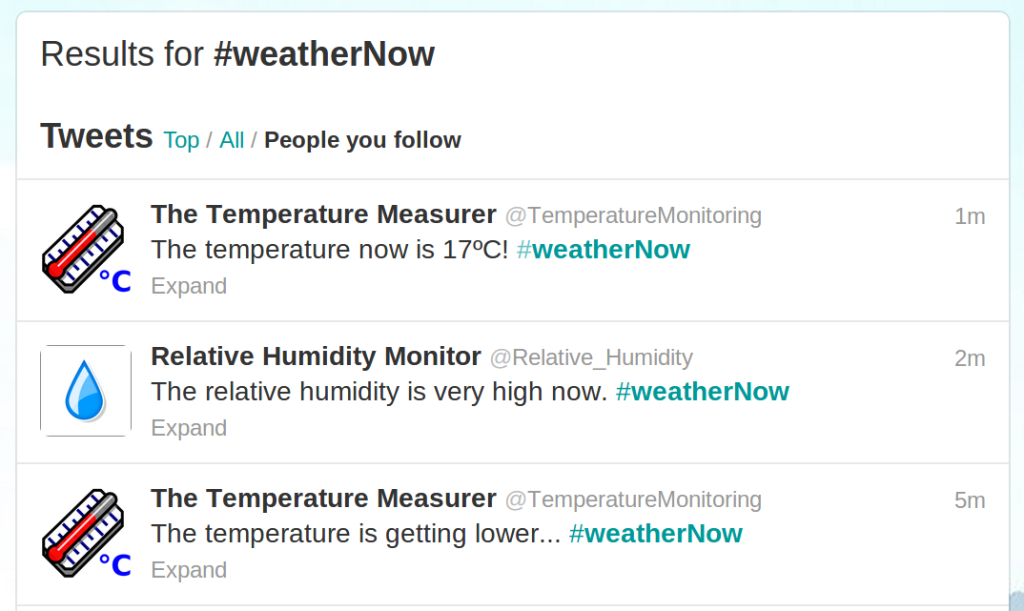Different types of WSNs may be deployed in similar areas in order to measure semantically linked data, for example, temperature and humidity. Therefore, these data could be combined to enhance the accuracy of different WSNs without increasing their measurement rate and keeping their levels of energy consumption low.
Transcription of the presentation:
My work is an autonomic architecture that gets data from external Wireless Sensor Networks (WSN) to improve the operation of the other WSNs.
For example, let us suppose that today we have this scenario:
Then, we can infer that the probability of having a forest fire is low and, if we have a WSN to track forest fire, we can turn off some of the nodes and improve the energy consumption without losing the quality of the measurements.
If you come to my poster, I will tell how I can: (1) Get the raw data and by using semantic and syntactic validations; (2) I will filter only the meaningful data; (3) I calculate a correlation between different domains in order to build a new plan and; (4) Then apply to the other WSNs.
—
The project page is here.
The publication can be downloaded here.




1 Response
[…] the simulations for my PhD project, I faced the problem of missing network simulations that are not only focused on the packet […]